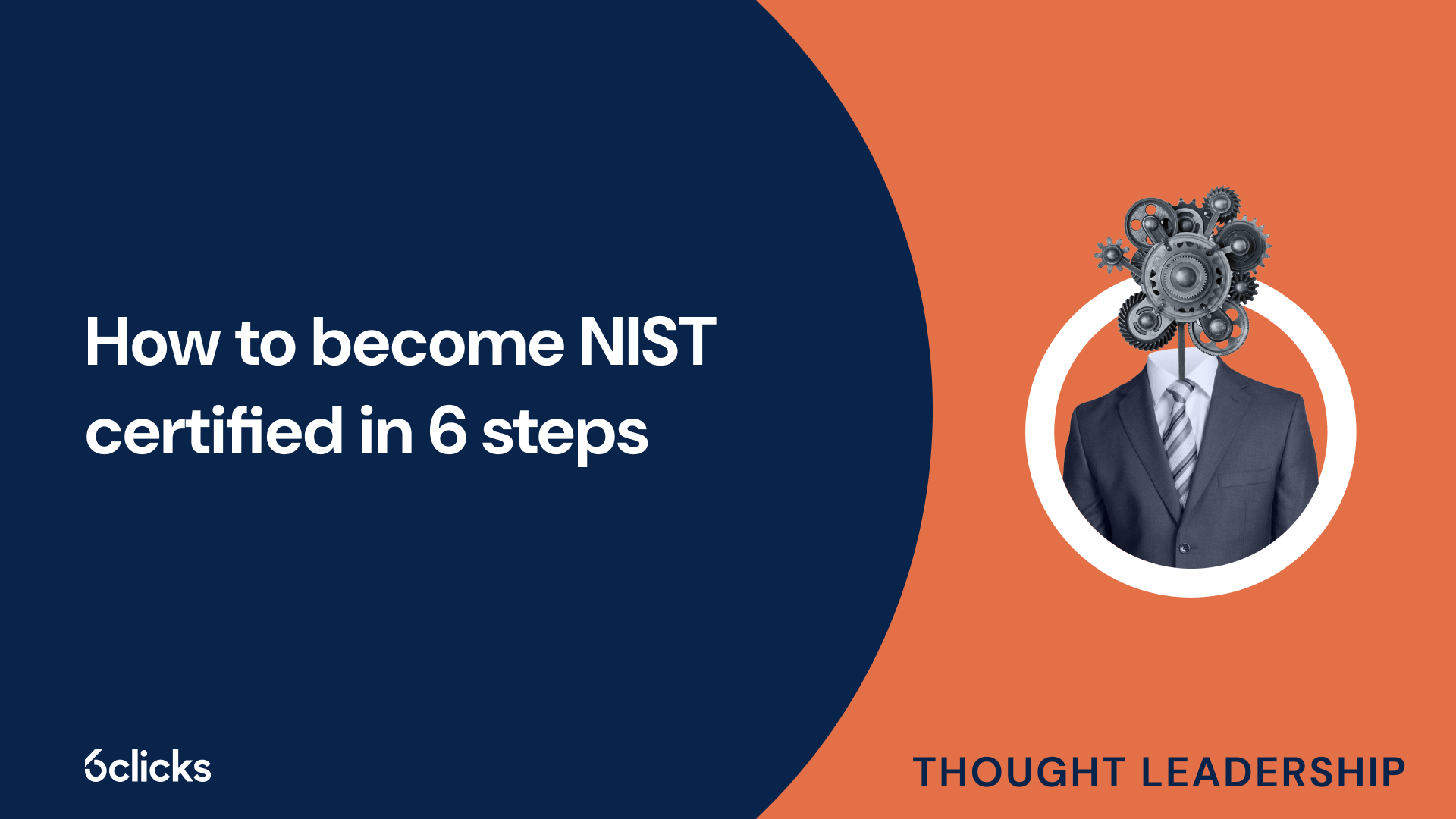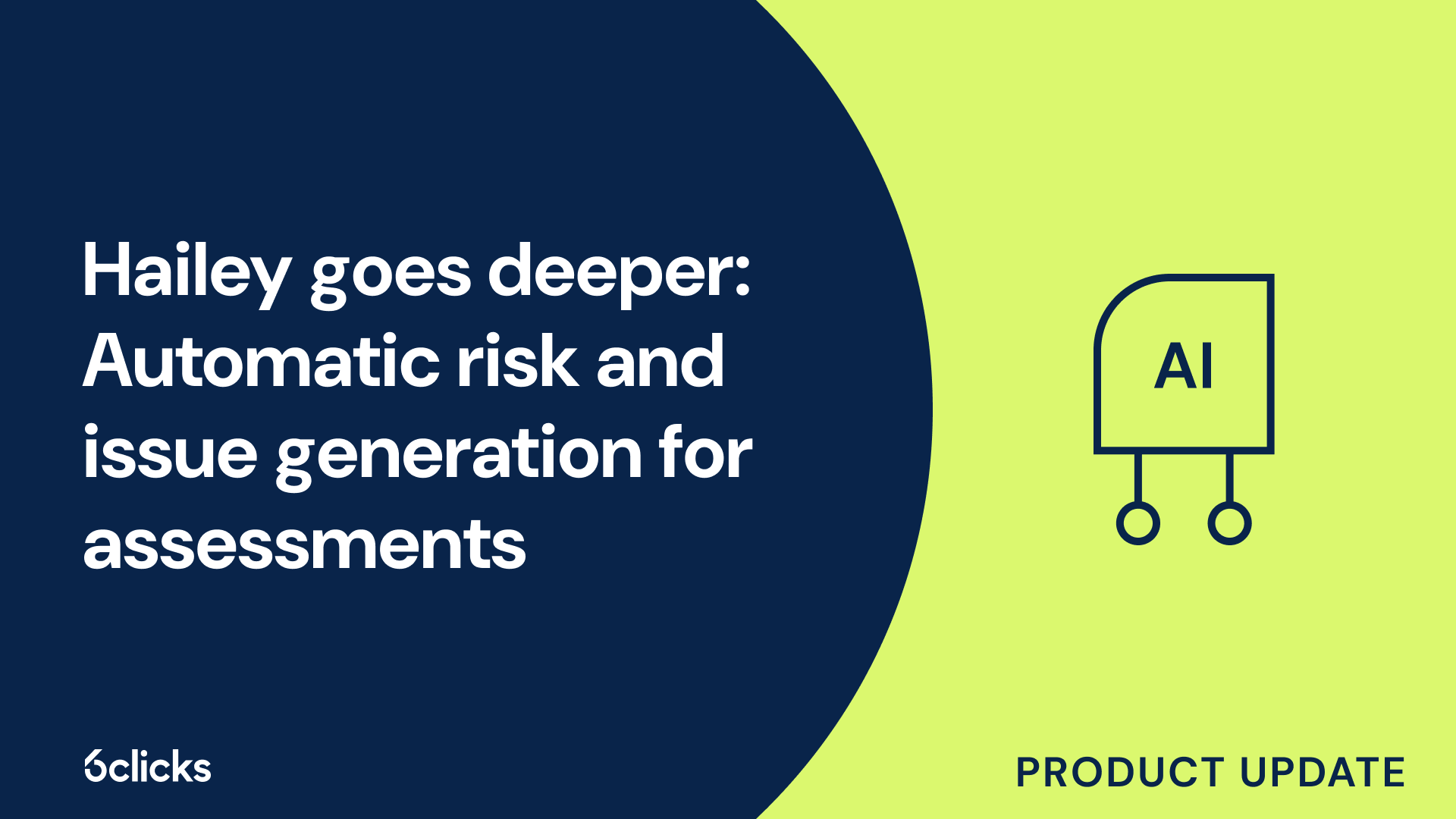What are the HITRUST security controls?
What is HITRUST?
HITRUST, or the Health Information Trust Alliance, is a non-profit organization that has developed a certifiable framework called the HITRUST CSF (Common Security Framework) to help streamline and simplify regulatory compliance and risk management for healthcare organizations. Recognized as the gold standard for healthcare industry security controls, HITRUST combines various industry standards and authoritative sources to create a comprehensive information risk management framework. It takes an integrated, risk-based approach to security control requirements, providing organizations with a clear roadmap to assess and enhance their security posture. With HITRUST CSF, healthcare organizations can efficiently address regulatory factors and compliance requirements, ensuring the protection of personal health information and securing their network infrastructure. To achieve HITRUST certification, organizations must undergo a thorough assessment process conducted by a HITRUST CSF assessor firm, to validate their compliance and maturity levels across the various security control baselines outlined in the framework.
What are security controls?
Security controls are measures that organizations implement to safeguard their information systems and protect against unauthorized access, disclosure, alteration, or destruction of data. These controls are essential in maintaining the confidentiality, integrity, and availability of sensitive information.
In the healthcare industry, where the security and privacy of patient data are paramount, security controls play a crucial role in identifying and mitigating vulnerabilities. With the increasing digitization of healthcare records and the growing threat landscape, healthcare organizations face significant risks related to data breaches and regulatory non-compliance.
Common types of security controls used in healthcare organizations include administrative controls, such as security policies and procedures; technical controls, such as firewalls and encryption; and physical controls, such as access controls and video surveillance. These controls work together to establish an effective security posture and protect against potential threats.
One comprehensive framework that healthcare organizations can use to manage security risks and achieve regulatory compliance is the HITRUST Common Security Framework (CSF). HITRUST CSF is an industry-agnostic certifiable framework that combines multiple authoritative sources, including government regulations, industry standards, and best practices. It provides a risk-based approach to align security control requirements with an organization's specific risk profile, maturity level, and regulatory factors.
By leveraging the HITRUST CSF, healthcare organizations can assess their compliance postures, identify gaps in their security controls, and prioritize remediation efforts. It also provides a systematic and efficient approach to achieve a level of assurance that meets both the organization's needs and regulatory requirements.
Overview of HITRUST security controls
The HITRUST Common Security Framework (CSF) is a comprehensive framework that healthcare organizations utilize to manage security risks and achieve regulatory compliance. It is an industry-agnostic certifiable framework that integrates multiple authoritative sources, including government regulations, industry standards, and best practices. The HITRUST CSF adopts a risk-based approach to align security control requirements with an organization's specific risk profile, maturity level, and regulatory factors. It provides a structured method for healthcare organizations to assess their compliance postures, identify gaps in their security controls, and prioritize remediation efforts. By leveraging the HITRUST CSF, organizations can establish an efficient and effective security posture to protect patient data, meet regulatory requirements, and mitigate potential vulnerabilities and threats. The framework provides a gold standard for comprehensive information risk management and can be utilized by organizations of all sizes in the healthcare industry, including service providers, business associates, and cloud service providers.
Common security frameworks for healthcare industry
In the healthcare industry, common security frameworks are utilized to ensure security and compliance within organizations. These frameworks provide a structured approach to managing security risks and meeting regulatory requirements.
One such framework is the HITRUST CSF (Common Security Framework), which is a certifiable framework specifically designed for the healthcare industry. It combines various regulatory requirements and industry standards into a single comprehensive framework. The HITRUST CSF allows organizations to assess their security posture, identify gaps, and implement controls to mitigate risks.
Another widely used framework is the NIST (National Institute of Standards and Technology) Cybersecurity Framework. This framework provides a risk-based approach to managing cybersecurity risks and focuses on five core functions - identify, protect, detect, respond, and recover. It helps healthcare organizations to align their security efforts with business objectives and ongoing risk assessment processes.
By utilizing these common security frameworks, healthcare organizations can establish and maintain robust security and compliance programs. These frameworks enable organizations to implement security controls, develop security policies, and assess the maturity levels of their security programs. They also provide an efficient approach to manage security risks, helping organizations to safeguard sensitive patient information and protect against potential data breaches.
Requirements and statements of the HITRUST CSF
The HITRUST CSF (Common Security Framework) serves as a comprehensive and certifiable framework specifically designed for organizations in the healthcare industry. It integrates various security and privacy-related standards, regulations, and frameworks, providing a holistic approach to managing risk and ensuring regulatory compliance.
The HITRUST CSF incorporates requirements and statements from authoritative sources such as ISO, NIST, PCI, and HIPAA. It covers a wide range of control requirements, including but not limited to network security, risk management, privacy controls, incident response, and access control. These requirements and statements are mapped to different maturity levels, allowing organizations to assess and improve their security posture over time.
The HITRUST CSF also includes the HITRUST CSF Assurance program, which helps organizations demonstrate compliance with HIPAA requirements. This program combines the HITRUST CSF with the requirements and statements of HIPAA, creating a comprehensive control framework that aligns with both regulatory and industry standards.
Organizations can choose to undergo a self-assessment or a validated assessment to achieve HITRUST CSF certification. While self-assessments provide an initial understanding of an organization's security posture, validated assessments by a HITRUST assessor firm offer a higher level of assurance. Working with a qualified assessor firm ensures that the assessment process is conducted in a thorough and unbiased manner, leading to a more credible certification.
Risk assessment and management with the HITRUST CSF
Risk assessment and management are essential components of the HITRUST CSF framework, providing organizations in the healthcare industry with a comprehensive approach to identifying, evaluating, and addressing security risks.
The HITRUST CSF incorporates a risk-based approach to prioritize the implementation of security controls. The r2 validated assessment, a core component of the HITRUST CSF, assesses an organization's risk management processes, including risk identification, analysis, mitigation, and monitoring.
During the r2 validated assessment, organizations undergo a thorough risk assessment to identify and understand their risk exposure. This assessment considers various risk factors, such as the organization's size, complexity, industry sector, and regulatory requirements. Scoping factors are also taken into account to determine the number of applicable requirements for the organization.
The comprehensive risk-based approach of the r2 assessment ensures that organizations focus their efforts on applying appropriate controls to address their specific risk profile. This risk-based approach allows organizations to allocate resources efficiently and effectively based on the level of risk exposure, ultimately enhancing the organization's security posture. However, it is important to note that the level of effort and resources required for completion of the r2 assessment will vary depending on the organization's size, complexity, and risk profile.
By conducting risk assessment and management within the framework of the HITRUST CSF, organizations can proactively identify and mitigate security risks, improve their compliance postures, and enhance the overall security of their sensitive data and systems.
Components of a compliance program with HITRUST CSF
A compliance program with HITRUST CSF consists of several key components that work together to ensure organizations achieve compliance with the HITRUST framework. These components contribute to building and maintaining a robust security posture in the healthcare industry.
One important component is the establishment of comprehensive security policies and procedures tailored to the organization's specific needs. These policies provide guidance on how to implement and maintain appropriate security controls, ensuring adherence to regulatory requirements and industry best practices.
Another crucial aspect is the implementation and management of security controls. HITRUST CSF provides a detailed set of security control baselines, which organizations can use as a starting point for their compliance efforts. These controls address various security risks and are designed to mitigate those risks effectively. By implementing these controls, organizations enhance their security posture and reduce the potential for data breaches or other security incidents.
In addition, a compliance program with HITRUST CSF includes a robust risk management process. This involves conducting regular risk assessments to identify potential vulnerabilities and threats, analyzing the impact and likelihood of these risks, implementing appropriate risk mitigation measures, and continuously monitoring and reviewing the effectiveness of these measures.
Moreover, verification through self-assessment or external validation by a qualified assessor plays a vital role in achieving compliance with the HITRUST framework. Self-assessment allows organizations to evaluate their own compliance posture against the HITRUST CSF requirements. External validation by a qualified assessor, such as a HITRUST CSF Assessor firm, provides an independent assessment that adds credibility to an organization's compliance efforts.
HITRUST CSF offers three levels or tiers of assessment. The first level is self-assessment, where organizations can assess their own compliance and make improvements as necessary. The second level is CSF validation or certification, where organizations undergo an independent assessment by a qualified assessor to verify their compliance with the HITRUST CSF requirements. The highest level is the HITRUST CSF Bridge Assessment, which assesses an organization's compliance with additional regulatory factors and requirement statements.
By implementing the components of a compliance program with HITRUST CSF and undergoing appropriate verification, organizations can achieve and demonstrate compliance with the HITRUST framework. This not only helps protect sensitive healthcare information but also enhances trust and confidence in the organization's security posture within the healthcare industry.
Certification process for organizations with Hitrust CSF
The certification process for organizations seeking HITRUST CSF certification involves several steps and requires an independent assessment from a HITRUST-Authorized External Assessor. The process begins with organizations adopting the HITRUST CSF framework as a certifiable framework for managing their security and compliance programs.
The primary steps involved in the certification process include:
- Adoption of HITRUST CSF: Organizations need to adopt the HITRUST CSF and integrate it into their existing security policies and procedures. This framework provides comprehensive security controls and baselines that organizations can use to meet regulatory requirements and mitigate security risks.
- Completing the Self-Assessment: Organizations start by conducting a self-assessment to evaluate their current compliance posture against the HITRUST CSF requirements. This step helps them identify any gaps and areas that need improvement before seeking certification.
- Preparing for the Assessment: After completing the self-assessment, organizations need to prepare for the independent assessment by a HITRUST-Authorized External Assessor. This involves gathering the necessary documentation, evidence, and evidence of remediation efforts undertaken to address any identified gaps.
- Independent Assessment: The HITRUST-Authorized External Assessor conducts an assessment of the organization's security controls and processes to verify compliance with the HITRUST CSF requirements. This assessment is in-depth and rigorous, involving interviews, documentation reviews, and on-site inspections.
- Remediation and Validation: If any deficiencies or gaps are identified during the assessment, organizations must address them and remediate accordingly. Once the remediation efforts are complete, the assessor conducts a validation assessment to verify that all requirements have been met.
The time it takes to complete the HITRUST CSF certification process can range from six to eighteen months, depending on the complexity and size of the organization. However, achieving the certification demonstrates a commitment to industry standards and a mature and efficient approach to managing security and compliance in the healthcare industry.
Benefits of using the HITRUST CSF in healthcare industry
The HITRUST CSF (Common Security Framework) offers numerous benefits for organizations in the healthcare industry. This comprehensive and certifiable framework helps healthcare organizations demonstrate their commitment to security and compliance in a streamlined and efficient manner.
One of the main benefits is that the HITRUST CSF incorporates healthcare-specific requirements from existing frameworks, such as HIPAA, HITECH, and NIST, eliminating the need for organizations to navigate multiple regulatory requirements. This integration of requirements simplifies the compliance process and allows organizations to focus on implementing the necessary security controls.
Furthermore, HITRUST CSF certification provides organizations with a gold standard for security and compliance. By obtaining this certification, healthcare organizations can demonstrate to their customers, partners, and regulators that they have implemented robust controls to protect sensitive health information. This can enhance trust and confidence in the organization's security posture.
HITRUST CSF certification also offers potential cost savings for healthcare organizations. Because the framework incorporates various regulatory requirements, organizations can achieve compliance with multiple frameworks through a single assessment and certification process. This eliminates the need for multiple assessments and reduces associated costs.
In addition, HITRUST offers different levels of assessment, ranging from the foundation-level i1 assessment to the highest-level CSF-FFR (Full Flexibility Review). These levels build upon each other, allowing organizations to progress and further enhance their security and compliance measures based on their specific needs and risk profile.
It is worth noting that Microsoft Azure and Office 365 have become the first hyperscale cloud services to receive HITRUST CSF certification. This certification further highlights the suitability and effectiveness of the HITRUST CSF in the healthcare industry, particularly for organizations utilizing cloud services.
Maturity levels for different organizations with the HITRUST CSF
The HITRUST CSF offers different maturity levels that organizations can achieve based on the implementation of control requirements. These maturity levels provide a structured approach to measuring an organization's security and compliance posture.
The maturity levels within the HITRUST CSF include Policy, Procedure, Implementation, and Measured Maturity. Each level builds upon the previous one, representing a progression towards a more robust security posture.
The maturity levels are scored based on the implementation of control requirements. Achieving passing scores in each level demonstrates the organization's commitment to meeting the necessary security controls and regulatory requirements. This scoring method allows for a comprehensive evaluation of an organization's security program, ensuring that it is effective in protecting sensitive health information.
The weightings for each maturity level reflect the importance of achieving passing scores. The Policy and Procedure levels carry a combined weighting of 20%, emphasizing the significance of having documented policies and procedures that align with the HITRUST CSF control requirements. The Implementation level holds a weighting of 60%, indicating the importance of effectively implementing the control requirements within the organization's security program.
Services provided by the HITRUST alliance
The HITRUST Alliance plays a crucial role in advocating programs that safeguard protected health information (PHI) and manage information risk for healthcare organizations and their third-party service organizations.
HITRUST provides a comprehensive certification process known as the HITRUST CSF (Common Security Framework) to address the regulatory requirements and security risks faced by the healthcare industry. This certifiable framework serves as a gold standard for organizations seeking to demonstrate their commitment to regulatory compliance and effective risk management.
By offering a risk-based and industry-agnostic approach, the HITRUST CSF enables organizations of all types and sizes to assess and manage their security posture effectively. It incorporates relevant security controls from multiple authoritative sources, allowing organizations to meet the diverse compliance requirements mandated by various regulatory factors.
The services provided by the HITRUST Alliance include conducting risk assessments, assisting with certification requirements, and providing guidance and resources to healthcare organizations and their third-party service organizations. By taking an integrated and efficient approach, HITRUST helps organizations navigate the complex landscape of information security and privacy controls.
With the HITRUST CSF as their guide, healthcare organizations can enhance their security programs, reduce risk exposure, and instill confidence in their ability to protect personal health information. Through independent assessments conducted by HITRUST CSF assessors, healthcare organizations can validate their compliance postures and demonstrate a high level of assurance in their security controls and risk management practices.
Regulatory requirements for healthcare industry with HITRUST CSF
In the healthcare industry, regulatory requirements play a critical role in ensuring the privacy and security of sensitive patient information. Healthcare organizations are subjected to various regulatory factors, such as HIPAA (Health Insurance Portability and Accountability Act), HITECH (Health Information Technology for Economic and Clinical Health Act), GDPR (General Data Protection Regulation), and more. Compliance with these regulations is essential to protect personal health information and maintain the trust of patients.
HITRUST's Common Security Framework (CSF) has emerged as a comprehensive and widely accepted solution to meet these regulatory requirements. The HITRUST CSF provides a certifiable framework that enables healthcare organizations to assess their security posture and implement controls to mitigate potential risks. It incorporates control requirements from multiple authoritative sources, including HIPAA, ISO, NIST, and more, ensuring a robust and comprehensive approach to regulatory compliance.
To achieve HITRUST certification, healthcare organizations must undergo an independent assessment by a HITRUST CSF Assessor firm. This assessment evaluates the organization's control implementation across various domains, such as access control, incident management, data protection, and more. The assessment process helps healthcare organizations identify gaps in their security controls and develop a roadmap for remediation.
By achieving HITRUST certification, healthcare organizations can demonstrate their commitment to regulatory compliance and effective risk management. This certification provides assurance to patients, partners, and regulatory bodies that the organization has implemented a stringent and comprehensive security program. It elevates the organization's status within the industry and helps foster trust and confidence in its ability to protect patient data.
HIPAA law and its requirements for patient privacy and protection of PHI
The HIPAA law, or the Health Insurance Portability and Accountability Act, sets forth specific requirements for safeguarding patient privacy and protecting the confidentiality of Protected Health Information (PHI). Compliance with HIPAA is essential for healthcare organizations to maintain the trust of patients and avoid legal and financial repercussions.
The HIPAA law mandates that healthcare organizations must establish appropriate administrative, physical, and technical safeguards to protect PHI. The Technical Safeguards, as outlined in the HIPAA Security Rule, are particularly significant in achieving compliance.
Technical Safeguards refer to the technology and procedures used to protect electronic PHI (ePHI). They encompass measures such as access controls, encryption, audit controls, integrity controls, and transmission security. These safeguards are crucial for ensuring the confidentiality, integrity, and availability of ePHI.
In the HITRUST CSF, which is commonly used by healthcare organizations as a framework for regulatory compliance, Category 0.13: Privacy Security Practices specifically addresses the control objectives related to patient privacy and PHI protection. The seven control objectives in this category include: access authorization, access establishment and termination, audit controls, data backup, integrity monitoring, transmission security, and remote access. These control objectives provide a comprehensive framework for healthcare organizations to implement measures that align with the requirements set forth by HIPAA and other relevant regulations.
Meaningful use regulations from centers for medicare & medicaid services (CMS)
Meaningful use regulations, established by the Centers for Medicare & Medicaid Services (CMS), play a crucial role in shaping the healthcare industry. These regulations aim to encourage healthcare organizations to adopt electronic health record (EHR) systems and use them to improve patient care and outcomes.
Healthcare organizations that participate in CMS programs, such as Medicare and Medicaid, are required to demonstrate meaningful use of certified EHR technology. This means they must meet specific objectives and measurements designed to enhance the quality, safety, and efficiency of healthcare delivery.
To fulfill the requirements of meaningful use, healthcare organizations must implement EHR systems that meet the certification criteria set by CMS. These criteria cover various aspects, including secure communication of electronic health information, electronic prescribing, and clinical decision support.
Complying with meaningful use regulations has several benefits for healthcare organizations. Firstly, it enables them to improve the quality of patient care by enhancing care coordination and providing better access to patient information. Secondly, meaningful use promotes patient engagement through features such as online patient portals. Lastly, participating in meaningful use can result in financial incentives for eligible providers and hospitals.
NIST 800-53 Rev. 4 security control baselines
The NIST 800-53 Rev. 4 security control baselines provide organizations with a comprehensive framework for managing and securing their information systems. These baselines are designed to address the security requirements of federal agencies, but they are also widely used by non-federal organizations as a best practice for implementing effective security controls.
The security control baselines are organized into several categories, each focusing on a specific aspect of security. One key category is access control, which aims to ensure that only authorized individuals have access to systems, data, and resources. This category includes objectives such as controlling user access, enforcing password policies, and implementing multi-factor authentication.
Another important category is communications and operations security. Here, the objectives include securing network connections, protecting communications channels, and monitoring and controlling system operations. This category is crucial for maintaining the confidentiality, integrity, and availability of information systems.
The security incident management category focuses on detecting, responding to, and recovering from security incidents. Objectives within this category include establishing incident response capabilities, conducting security incident awareness training, and establishing an incident reporting mechanism.
In total, the NIST 800-53 Rev. 4 includes hundreds of objectives across these and other categories. Each objective is backed by references to authoritative sources, providing organizations with the necessary guidance for effective implementation. By following these security control baselines, organizations can strengthen their security posture and reduce the risk of security breaches.
Related eBooks & Expert guides
- What is HITRUST?
- Why is HITRUST important?
- What is the HITRUST Common Security Framework (CSF)?
- What are the HITRUST CSF controls?
- What are Risk Factors in the HITRUST CSF?








